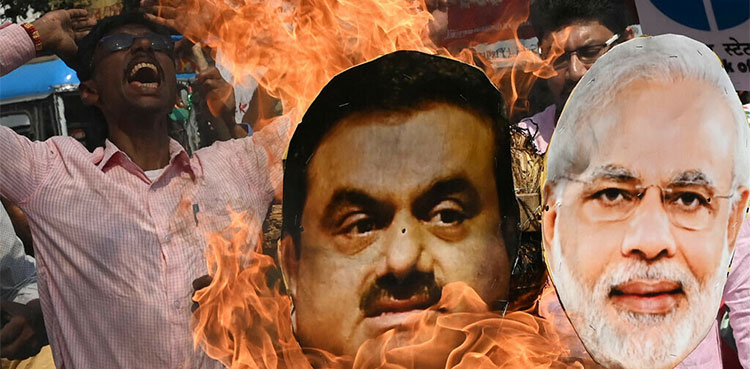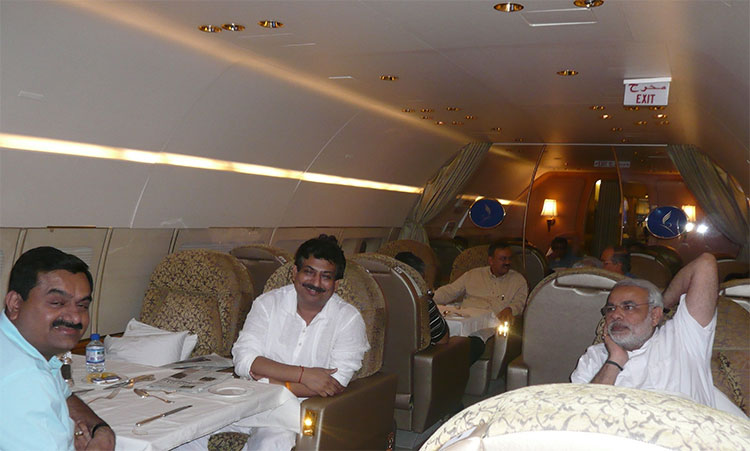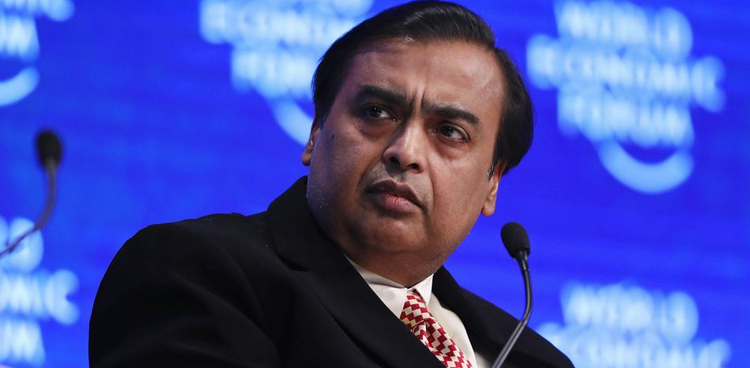
Modi has always shown a visible favour towards the business community particularly entrepreneurs and tycoons like Adani and Ambani and this bias is reflected in the policies of his government.
It is well-known that tycoons favoured by BJP paid a pivotal role in the Indian national elections of 2019 that are widely recognised as the most election ever. The BJP government reportedly leans heavily towards the corporate sector and Modi is widely recognised to be very close to many tycoons.
BJP is considered an expert in garnering the support of the corporate sector as it pedals most rightist policies that are widely liked by the business and trading circles. A section of the corporate sector is specially favoured by the BJP, particularly, by Narendra Modi and his association with the top-notch entrepreneurs is widely commented upon and there is widespread impression that his government extends favours that are far beyond the borders of properiety.
Modi tries to show his unconcern about the matter but it has gradually strenghtened opposition to his openly biased attitude particularly amongst the main opposition Congress party.
It was reported that the 2019 contest topped some $7 billion that made it one of the costliest elections globally. It was also pointed out that around $5 billion was spent during the 2014 election that swept Modi’s Hindu nationalist Bharatiya Janata Party (BJP) to power and was substantially up from $2 billion spent in 2009. Modi’s second election was heavily bankrolled by corporate India that rasied fears about the country’s democratic process. It was pointed out that prior to 2019 elections corporates and individuals contributed 12 times more to the BJP than to six other national parties including Congress, combined.
The BJP received 93 per cent of all donations above 20,000 Indian rupees and cumulatively amounting to 4.37 billion Indian rupees ($63.3 million); Congress got just 267 million Indian rupees implying that there is a huge funding disparity between parties.
It was all the more evident that Modi traveled between rallies in a corporate jet and helicopter owned by billionaire industrialist Adani while magnate Ratan Tata praised Modi for carrying out fake “air strikes” in Pakistan. India’s richest man Ambani whose personal net worth soared from $18.6 to more than $53 billion after Modi came to power and he has repeatedly praised the prime minister in very endearing terms.

It is reported that contesting elections are getting expensive as political parties are becoming more reliant on donations from anonymous businessmen leading to a lack of transparency and worrying conflicts of interest.
Many analysts mention that this trend smacks of plutocracy and express fears that unbridled corporate influence can have a serious impact on policies. They add that traditional funding streams, such as party memberships, are declining so parties increasingly rely on wealthy donors to fund campaigns.
The dubious nexus between governing BJP and corporate sector has now been seriously questioned in the Indian parliament with the opposition lawmakers creating a rumpus while demanding an investigation into the connection between the Adani business Group and Modi. They pointed out the government is giving undue favours to the Adani Group though Modi retaliated hard against their accusations but spent his 90-minutes speech in parliament mainly listing his government’s achievements completely avoiding answering questions about the under-fire Adani Group.
Modi, in his first public comments alluding to the accusations over Adani, tried to cover things up rhetoric by emphasising that the support of people is his protective cover and no one can destroy it. Amidst opposition chanting ‘Adani, Adani’ Modi insisted that the trust that people have put in Modi is beyond the understanding of the opposition. This furore emerged after a report issued by an international group accused the Adani ports-to-energy conglomerate of stock manipulation and improper use of tax havens, while also saying it had unsustainable debt.
The international group Hindenburg Research’s report triggered a rout in stocks of Adani Group’s seven listed companies that collectively lost more than $110 billion in market valuation before paring losses in recent days.
The Adani conglomerate has denied the accusations saying that the Hindenburg’s allegation of stock manipulation has no basis and stems from an ignorance of Indian law. Opposition parties see the affair as an opportunity to corner Modi who is eyeing a third term in elections next year. They have questioned investments made by state-run Life Insurance Corporation of India and the State Bank of India in Adani Group companies. The opposition also alleges that the government handed over management of some airports in India to the Adani Group even though it did not have any experience in the sector.
Earlier the opposition brought out a fighter jet deal involving industrialist Anil Ambani wherein Modi and Anil Ambani, Mukesh’s younger brother are accused of dodgy dealings related to the purchase of Rafale jets from France. At that time it was pointed out that the opposition also accused liquor-baron Mallya and jeweller Nirav of massive fraud in collusion with the ruling party and reportedly the Indian government is trying to extradite them from Britain.

The opposition emphasises that Modi has consistently claimed cracking down on crony capitalism during his tenure but the vociferous opposition in the parliament has made a mockery of his claims. It is widely believed that this opposition will increase and will create more difficulties for Modi in the run-up to national elections next year.
Modi is reported to having lost its lustre and is considered politically weak as is indicated by the rise of Aam Aadmi Party and its successive victories in state polls.
While the opposition is cornering Modi, his regime is trying to capitalise on the security fears that his government keeps on fanning. In this context the BJP government has increased Indian defence budget by 13 per cent from the last year aiming to add more fighter jets and roads along its tense border with China and Pakistan. Indian government has allocated Indian Rs.5.94 trillion ($79 billion) for defence spending including Rs.1.63 trillion for defence capital outlays — an expenditure that would include new weapons, aircraft, warships and other military hardware. During his tenure in office Modi has ramped up spending to modernise the military, while underlining his government’s commitment to boosting domestic production to supply forces deployed along two contentious borders.
The total Indian defence budget, estimated at about 2 per cent of GDP is still lower than China’s 1.45tr yuan ($230 billion) which New Delhi sees as posing a threat to neighbours particularly India. India plans to spend nearly 242 billion rupees ($3billion) for naval fleet construction and 571.4 billion rupees ($7bn) for air force procurements, including more aircraft. India employs 1.38 million people in its armed forces, with large numbers deployed along borders with nuclear-armed rivals China and Pakistan. India and China share a 3,500-kilometre frontier that has been disputed since the 1950s and the two countries went to war over it in 1962.

At least 24 soldiers were killed when the armies of the Asian countries clashed in Ladakh, in the western Himalayas, in 2020 but tensions eased after military and diplomatic talks. A fresh clash erupted in the eastern Himalayas in December last year but no deaths were reported
from International News Today - Breaking News, US News, World News https://ift.tt/gJNLfar
via IFTTT